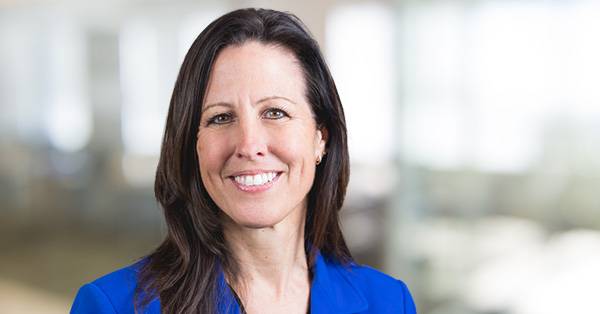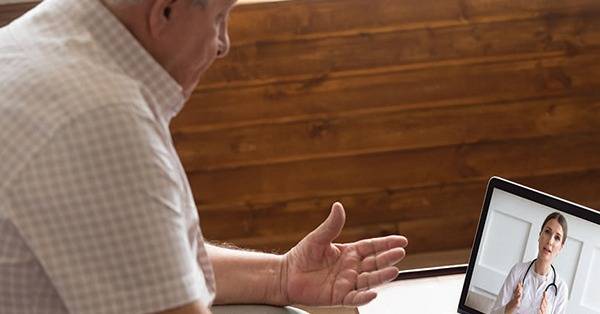- Solutions
- Solutions
- Home Health
- Hospice
- Life Plan Community
- Palliative Care
- Private Duty
- Senior Living
- Skilled Nursing
- Skilled Nursing
- Skilled Nursing Software
- Advanced Insights
- Customer relationship management
- Data and analytics
- Financial & operations management
- Marketing
- Nutrition management
- Referral management
- Regulatory compliance
- Retail management
- Resident engagement
- Revenue cycle management
- Skilled nursing interoperability
- Partners
- Blogs
- Resources
- About
- User Conference

Staffing strategies that support value-based care
Our industry’s challenge of finding and retaining staff isn’t going away anytime soon. That’s why it’s important to pay attention to staff satisfaction and engagement, not only for the health of your business but also to ensure you’re delivering high quality care and good outcomes, as mandated by value-based care initiatives.
Fortunately, there are new and emerging technology tools that can help you support your staff by reducing manual tasks so they have more time to focus on your residents. These tools support two key metrics under value-based care—better outcomes and higher resident satisfaction—while also reducing administrative burdens and helping improve employee retention.
Workflows and decision support
There are great tools that facilitate streamlined online workflows. For example, if a clinician routinely begins a process from a home page and then needs 10 clicks to get to a frequently used field or screen, these tools can monitor that process and highlight the inefficiency. User experience designers then work to enable faster, more intuitive access to information and data they need.
There’s another new technology that reduces manual input. Robotic process automation (RPA) tools can automate routine tasks such as entering information from one system to another, like the EHR. If a clinician uses a purely manual process to enter the same information in the same form field, there’s a risk of mis-keying or entering data in the wrong place. RPA tools can reduce the burden on staff while also improving data accuracy, which of course, helps improve outcomes. Automating data input so it’s more accurate can help clinicians take better care of residents, which supports value-based care goals.
Correct, complete documentation is crucial to post-acute care on many levels. Yet sometimes clinicians are so busy they may overlook something crucial to resident care, quality metrics or reimbursement. Decision support tools can deliver reminders for the next steps a clinician needs to take, as well as information that needs documentation. From critical assessments to preventive care, these tools can ease workloads while supporting quality care.
Another tool to consider is voice technology. These tools are improving every day, becoming more accurate and more robust. They can capture critical information and ensure it’s included in the EHR so everyone involved with a resident has a full picture of the care being provided. These tools also mean providers can focus on the resident instead of a computer or tablet screen, which in turn helps residents feel like they’re getting more personal, focused care.
Resident assessment and monitoring
When clinicians can intervene in a resident’s plan of care before an adverse event occurs, they feel more empowered to take care of residents. Avoiding negative outcomes, such as a fall, can help reduce staff workload by avoiding the extra tasks and documentation involved in the additional care required. Technology that helps them prevent negative outcomes also gives them more time to spend with other residents.
Having the right tools to quickly identify and assess early changes in condition can also ease staff burdens. Tools that incorporate AI have the capability to identify subclinical changes so staff can intervene more quickly and escalate issues as needed. These tools help clinicians make sure residents get the right care at the right time. From a value-based care perspective, this is huge: if we can detect signs of a worsening condition sooner, or identify patterns that indicate a potential decline, we can provide care earlier and achieve better outcomes.
Ambient technologies are emerging that hold so much promise—particularly in helping stretched clinical teams work more efficiently. Not only can they deliver the right information to clinicians at the right time, they do it without requiring the already overburdened staff to directly observe the resident and manually enter information into the EHR. These tools can identify subtle changes in condition, such as the resident getting up more often at night or showing unsteady movement patterns, helping clinicians provide proactive care without adding to their workload.
Care collaboration is another aspect of value-based care that can benefit from technology. There are tools available that make it easier to share the right data with the people who need it. A care team can loop in not just specialists and physicians but also social workers, dietitians, therapists, nurses, family members, or anyone else who should be involved. This helps make sure everyone is aligned on the care plan, all care team information is included, and that tests or other services aren’t duplicated.
Resident satisfaction is another aspect to consider. Tools that make human contact and care personalization easier are critical to value-based care. Technology that keeps residents in lowest-acuity settings appropriate for the resident condition or that facilitates direct conversations help residents feel connected and understood, and can lead to better resident satisfaction scores.
Operational support for training and scheduling
Because healthcare is always changing, access to the latest information and ongoing training and education is a must for any organization. Educating your staff about new regulations or best practices is critically important to value-based care principles. After all, regulations and best practices are generally changed to bring about better resident care. Organizations should take advantage of one of several online tools that make it easy for everyone have accurate, up-to-date information.
Placing residents in the right setting, and then scheduling staff with the appropriate expertise to care for them, is a complex task. Data-driven tools that offer information about resident acuity, integrated with EHR data, can help schedulers align staffing to current resident needs. Facilities should explore technology that can track key information on a minute-to-minute basis, and that combine with EHR data for visibility into changes that may require a staffing shift or other quick action to keep a situation from worsening.
Use technology to retain and engage staff
Keeping staff happy and engaged is vital to meeting goals under the value-based care model. If we can direct caregivers to the areas and residents where they can make a real difference, they’re more likely to feel satisfied with their work. This can lead to lower turnover and burnout rates, improved care quality, higher resident satisfaction, and better organizational health.
Request a demo today for a closer look at MatrixCare.
Allison Rainey
As our Head of Nursing and Clinical Informatics, Allison Rainey oversees the deployment of clinical technologies. As a Registered Nurse and License Family Practitioner, Allison drives a caregiver-first approach in our products, collaborating closely with product leaders to ensures our products and services prioritize the needs and challenges faced by healthcare providers. By aligning workflows, designs, and overall product strategy, Allison strives to offer the most user-friendly, clinically superior, and efficient suite of comprehensive solutions in the industry. Allison brings extensive post-acute care experience from her 20-year tenure at NHC, one the largest publicly traded Senior Care providers in the U.S. She is a seasoned leader in population health management strategy, clinical reporting and analytics development, and inpatient hospital care. In her most recent role as AVP of Clinical Information Technology, she oversaw the deployment and utilization of various clinical technologies, including the MatrixCare EHR, across the extensive NHC network. Allison holds a Bachelor’s and a Master’s in Nursing from the University of Tennessee.
Related Posts



See MatrixCare in action
Start by having a call with one of our experts to see our platform in action.
MatrixCare offers industry-leading software solutions. Thousands of facility-based and home-based care organizations trust us to help them improve efficiency and provide exceptional care.
© 2025 MatrixCare is a registered trademark of MatrixCare. All rights reserved.




